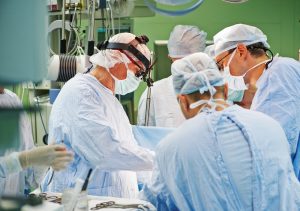A team of researchers at University College London has developed a device known as a broadband near-infrared spectroscopy (NIRS) that uses light to detect brain damage in infants. They are now planning a clinical trial of the NIRS.
What is near-infrared spectroscopy?
 Near-infrared spectroscopy (NIRS) is a spectroscopic method that uses the near-infrared region of the electromagnetic spectrum. There are many different applications of NIRS which include astronomical spectroscopy, agricultural, pharmaceutical, and neonatal research.
Near-infrared spectroscopy (NIRS) is a spectroscopic method that uses the near-infrared region of the electromagnetic spectrum. There are many different applications of NIRS which include astronomical spectroscopy, agricultural, pharmaceutical, and neonatal research.
Sir Frederick William Herschel accidentally discovered red-light radiation in the 1800s. However, NIRS was only developed further by the manufacturing industry in the 1950s. In 1985, Ferrari published an article on the application of cerebral NIRS in humans. Five years later, in 1993, the U.S. Food and Drug Administration (FDA) approved NIRS for medical and commercial use.
How does the technology work?
The NIRS instrument is a lens-based broadband near-infrared spectroscopy system. NIRS is non-invasive and portable. This means that there is a minimal health risk when applying it to individuals. NIRS can easily detect brain activity because of how thin infant scalps and skulls are. It measures oxygen and blood activity in the brain. It is placed on the infant’s head and shines red and infra-red light into the brain. It can detect changes in brain oxygen levels and energy usage through changes in the color of the light reflected. The sensors measure the reflected light to determine brain cell health.
How has NIRS previously been applied to newborns and young infants?
Researchers note that NIRS can be used to study the linguistic and cognitive abilities of newborns and young infants through near-infrared sensors. It can do so by looking at oxygen and blood activity within the brain during certain activities such as speech or movement.
What kinds of changes can NIRS bring to detecting brain damage in infants?
NIRS can help detect brain damage in infants early on, which can allow doctors to provide treatment. Dr. Gemma Bale, an engineer from University College, notes that the “first week after birth is a really critical time in babies’ development.” By being able to assess potential brain damage early on, it helps doctors develop a treatment that can save lives and prevent long-term disability. Dr. Bale also notes that this tool can offer “a more patient-focused approach.”
This technology can also be convenient because it is a less physically invasive procedure that can be done in the ICU. This means not having to wait for the infant to be stable enough to undergo an MRI. According to Kathy Beardsall, a neonatologist from Addenbrooke’s Hospital in Cambridge, UK, “being able to use a bedside, non-invasive technology would be a great advance in care.”
Benefits of using NIRS on Infants
NIRS are generally safe to use on infants, as the probes do not overheat, and LED light is safe for eyes. It is also non-invasive and does not require a tracer. With a setup time of less than one minute, it is faster than an MRI. NIRS also penetrates well into the cortex. There is also no gel required, unlike an MRI. Each of these benefits shows that NIRS can be an easy way to detect brain activity in infants. The fact that it is easy to use and non-invasive means it can be applied to newborns. It allows medical professionals to detect brain damage as early as possible. The earlier they can detect infant brain damage, the earlier they can devise ways to treat it so as to prevent further long-term health risks.
 Maryland Medical Malpractice Attorney Blog
Maryland Medical Malpractice Attorney Blog

